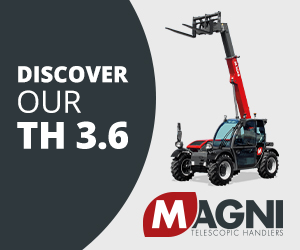Crane and Rigging Pros Convene in the Big Easy
This year’s two-day Crane & Rigging Conference in New Orleans, La., attracted about 180 lifting industry professionals interested in learning about tools for effective crane and rigging management.
The two-day conference was held jointly with the Industrial Crane & Hoist Conference, focused on overhead crane applications. Participants could custom tailor their education by choosing to attend seminars from both events.
In all, 18 industry experts presented 15 educational sessions covering topics ranging from accident analysis, to OSHA regulations, super-critical lifts, wire rope selection, workforce development, and using emotional intelligence to enhance safety.
In addition, seven experts held lunchtime Table Topics conferences in which small groups of eight to 10 attendees could discuss specific questions about topics like equipment upgrades, rigging, inspections, qualifying personnel, standards, and training.
Economist Hal Vandiver, president of Vandiver & Associates Inc., Charlotte, N.C., kicked off the conference with a keynote presentation bearing the positive prediction that construction machinery sales will grow by 30 percent over the next five years.
Jim Wiethorn, chairman of Haag Engineering, Houston, Texas, who studies more than 90 crane accidents per year, discussed how analyzing crane accidents can help lead to safer work environments by preventing future mishaps. His talk included information about his recent study of more than 400 crane accidents, conducted in conjunction with the Massachusetts Institute of Technology (MIT).
One of the more popular sessions was Case Studies of Super-Critical Lifts, presented by Harry Costner, who is project development manager for Mammoet USA and was formerly division manager for Becht Engineering. Costner’s presentation included how he planned and executed complex lifts in petrochemical plants and other challenging environments.
Another highlight was Brent Darnell’s conference-ending presentation about using emotional intelligence to improve workplace safety. The lively talk, which included plenty of audience participation exercises, focused on knowing yourself, developing emotional competencies, and how to effectively connect with construction industry people about safety.
For example, Darnell said, “The Alpha males and females involved in construction tend to fear dependence more than death. If you say that working unsafely may kill them, they will brush it off as a risk of the job.” He then went on to say that if you tell them that working unsafely may lead to them being paralyzed and having to depend on others to take care of their most basic needs for the rest of their lives, they are more likely to improve safety performance.
New products on display
Four exhibitors of more than 30 that exhibited during the event made announcements about new products.
HBC-Radiomatic, Hebron, Ky., has a new remote control that uses “integrated inclination” to operate any kind of crane or other mobile machinery by using hand movements, much like the single-hand controller for Wii video games. Tilting HBC Pilot controller left or right and moving it backward or forward lets an operator control two machine drives. Tilting the front up or down controls speed. For those who prefer a joystick, the controller includes a thumb-sized one of those, too.
Measurement Systems International, Seattle, Wash., offers its Model MSI-8000 lightweight, hand-held, wireless remote indicator lets users easily read the load on a crane hook, even when the dynamometer is hundreds of feet in the air. MSI also displayed its newest 25,000-pound capacity dynamometer, which weighs just 16 pounds.
Huntsville, Ala.-based Q-Track, a first-time exhibitor at CRC, showed its new PDS proximity detection system. The system can track and protect a dozen or more tagged workers in an area, or track the motion of a crane or forklift, and can automatically stop a vehicle or crane’s motion if it approaches a tagged person or other object. It can also log data to aid in operation analysis or accident re-creation.
Panora, Iowa-based DICA USA, another first-time exhibitor, displayed information about its thermoplastic outrigger pads, which are lightweight, weatherproof, and durable. It also demonstrated its FIT fitting safety system, which calculates the correct size and thickness of outrigger pad, based on outrigger foot size, load, and soil conditions.
Combining safety education with supplier information and networking opportunities, the third edition of MCM’s CRC-ICHC conference proved to be another solid success.











